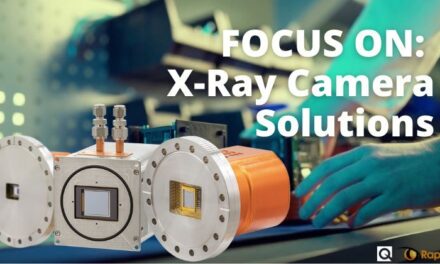 UK manufacturing has changed dramatically over the last few years. None more so than in the UK’s food & beverage industry, within which we are seeing a mini ‘Automation revolution’ as the amount of Robots being installed increases exponentially year on year. While we may still be some way behind our European counterparts, the gap is closing rapidly; currently the integration within the UK food & beverage sector is second only to the UK automotive industry.
UK manufacturing has changed dramatically over the last few years. None more so than in the UK’s food & beverage industry, within which we are seeing a mini ‘Automation revolution’ as the amount of Robots being installed increases exponentially year on year. While we may still be some way behind our European counterparts, the gap is closing rapidly; currently the integration within the UK food & beverage sector is second only to the UK automotive industry.
In 2021 the compounding effects of Brexit, minimum wage increases and COVID-19 triggered an influx of companies seeking help to automate their food & beverage processes; we are now seeing the realisation of those systems and the ‘early adopters’ are beginning to reap the benefits.
 There are many reasons why companies look to adopt automation: to increase throughput, reduce wage bills or reduce the risk of injury. In the UK, until very recently, there has been an overarching connotation that robots reduce the number of available jobs. Interestingly this ideal doesn’t seem to exist elsewhere in Europe and there are several rationale to prove this is not the case… perhaps to be discussed another time.
There are many reasons why companies look to adopt automation: to increase throughput, reduce wage bills or reduce the risk of injury. In the UK, until very recently, there has been an overarching connotation that robots reduce the number of available jobs. Interestingly this ideal doesn’t seem to exist elsewhere in Europe and there are several rationale to prove this is not the case… perhaps to be discussed another time.
Throughout the UK though one thing is clear, that low cost, transient labour has all but dried up. We have seen the tone of the industry shift dramatically – it is now no longer a question of improving processes. More often than not we are trying to help companies maintain productivity when they can’t find the staff at all.
 Employees are a business’s most important asset. Those valuable workers should be utilised as effectively as possible. KUKA Industrial robots continue to prove themselves as an important tool to negate the dull, dark and dangerous jobs, that no longer meet the expectations of a qualified UK workforce.
Employees are a business’s most important asset. Those valuable workers should be utilised as effectively as possible. KUKA Industrial robots continue to prove themselves as an important tool to negate the dull, dark and dangerous jobs, that no longer meet the expectations of a qualified UK workforce.
So where within your process chain could you be using robots? End of line packing and palletising is probably the most common place to find a robot. As a long standing, tried and tested application, many companies see palletisation as a low risk, low cost, high return, first step into robotics. Palletisation can be considered as a ‘non-value-added task’; if you think about it, is your product more valuable because a person has packed it? probably not.
Many of these palletising systems are standardised, or iterations of a standard solution. It doesn’t really matter what your product is: bags, boxes, tins… a few simple changes to a gripper and most palletisation systems will suit. This has allowed for further evolution in the industry; leasing and rental options. I’ve recently worked with one of our system partners to lease a palletising system to a company in South Wales. Not only is their using a robot for the handling of 25kg bags of animal feed much safer, but the monthly leasing costs are far less than the equivalent monthly wage. Not least to say staff are much happier having been redeployed to higher skilled tasks and not having to manhandle bulky bags of feed all day.
This is just one example of automation delivering success. Whatever your factory, process, or product, there could likely be a robotics success story for you too.


